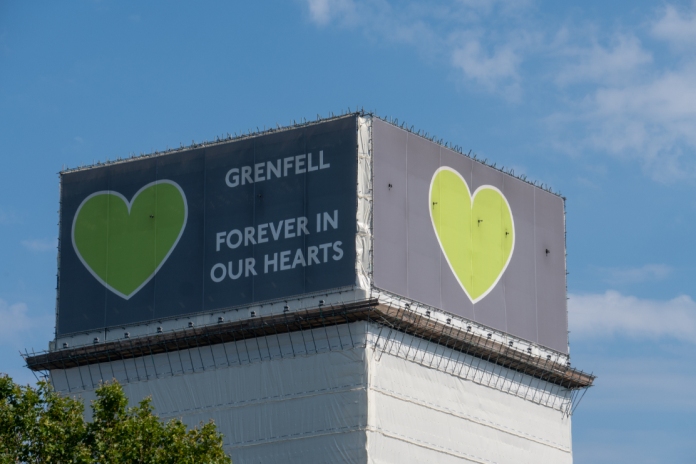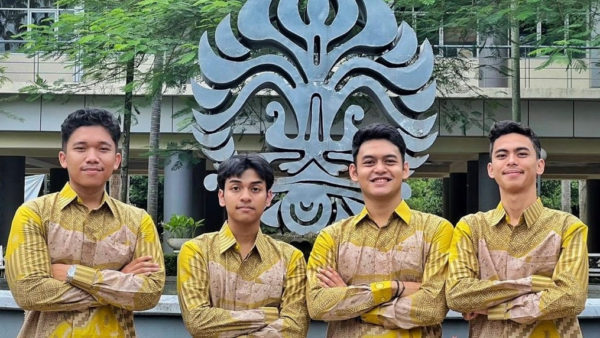
The former commercial manager of Harley Curtain Wall denies “pushing” to use aluminium composite (ACM) cladding on the Grenfell Tower project.
Mark Harris, who gave evidence to the Grenfell Tower Inquiry remotely yesterday (10 September), worked for Harley exclusively and full-time without a formal contract from 2011 and was involved in the project from April 2013 until April 2016.
Working on commission of 1% of the value of the contracts he secured, he confirmed that he expected to receive £26,000 for landing Harley the £2.6m Grenfell Tower subcontract.
He also confirmed the leading counsel to the Inquiry, Richard Millett QC, that he did not have any formal qualifications in façade engineering and would not ordinarily advise on whether or not an overall design or structure would comply with Building Regulations, nor advise on the compliance of specific products.
Millett asked Harris about a September 2013 meeting when he and Harley director Ray Bailey met Bruce Sounes and Tomas Rek of Studio E Architects, during which they discussed possible materials for the overcladding of Grenfell Tower.
Harris said that he and Bailey showed Studio E a brochure of previous overcladding projects the firm had completed, which predominantly involved ACM.
Pricing of cladding options
An email from architect Bruce Sounes, following the 27 September 2013 meeting to Ray Bailey and Mark Harris of Harley said that his firm was “looking seriously at Nedzinc’s composite panel.”
Harris came back to Sounes with pricing options in October 2013, including Reynobond’s natural zinc product, fabricated into cassettes, as well as three other options including a zinc-coloured standard aluminium ACM, which, if face fixed, Harris said could save over £500,000 from the budget. However, he did not include pricing for the Nedzinc product. Asked why not, Harris said Harley was “struggling to get prices at the time”.
Millett asked Harris why he volunteered the savings with standard ACM before being invited to provide them as part of an overall budget.
Harris replied that it was a “fairly standard thing to do”.
Pressing Harris on the point, Millett asked: “Looking at this email in the round…is it fair to say that you were actually pushing Reynobond ACM, or at least ACM, pretty hard?”
Harris replied: “You have to remember this is pre-fire at Grenfell, so at that stage, from Harley’s point of view, having successfully completed multiple projects with this same product, as far as we were concerned it was a good product for that application, as of course hundreds of others did all over the UK and throughout the world. So we weren’t sitting there thinking anything but: this is a really good product for this application and may prove a good solution for Grenfell Tower.”
Millet continued: “Is the answer to my question, yes, that you were pushing Reynobond ACM, or at least ACM, pretty hard?”
Harris replied: “No, I think we were advising of ACM as an option.”
Why Reynobond?
Millett also asked why Harris proposed Reynobond as opposed to any other ACM cladding brands, such as Alucobond, which Harris said was another of the main ACM products that Harley used at the time.
Harris said: “No good reason, just they’re some options that were on the table. It’s up to the client to come back and ask us if they want something outside of that. We table something, and then it’s for them to consider it and say whether they like what we’ve tabled or they want more options, because otherwise we could have 50 options.”
Millett replied: “But you were the one providing the options to Studio E. If you weren’t pushing Reynobond ACM, why not put Alucobond in there and get them to choose?
Harris responded: “Well, we could have done, but we didn’t.”
Millett said: “And I’m suggesting to you that the reason you didn’t was because your strong preference was for Reynobond to the exclusion of any other product.”
Harris answered: “I don’t agree with that , because this is at budget stage, and we were just offering some options at budget stage, and this always develops from that, where people then come back and ask different questions, as they did throughout this process.”
Asked if at the time that ACM was raised as an alternative option to zinc, any assessment had been done by Harley to determine whether it was a material for Grenfell that complied with statutory requirements and industry guidance, Harris replied: “I think that would have been based on an assumption, really, that because Harley had worked on multiple other tower block projects with ACM cladding.”
Relationship with Arconic
Millett also asked Harris about his relationship with Reynobond manufacturer Alcoa (later renamed Arconic).
Millett asked: “Is it fair to say that the relationship with Alcoa was a strong one, in the sense that Alcoa were the biggest supplier of rainscreen panels to Harley for its use on cladding projects?”
Harris replied: “Yeah. I mean, Harley didn’t buy materials direct from Alcoa, because Harley didn’t fabricate, so Harley would buy through a fabricator, which was CEP in this instance.”
Asked if Harris wasn’t actually liaising with any other ACM product manufacturers, Harris said: “No, maybe not on this project, but I certainly had a relationship with 3A Composites, with the chap that was there at the time. And non-ACM supply chain partners as well. It’s all part of the role.”
The Inquiry continues.









